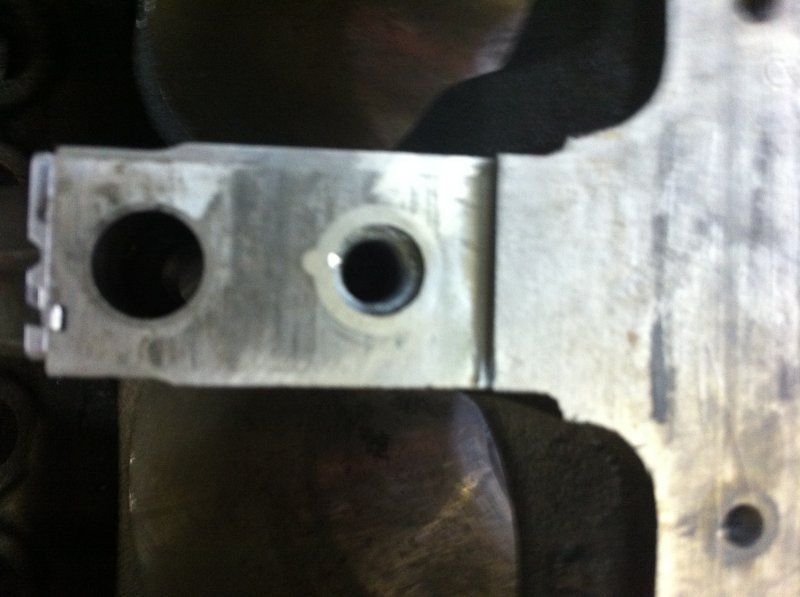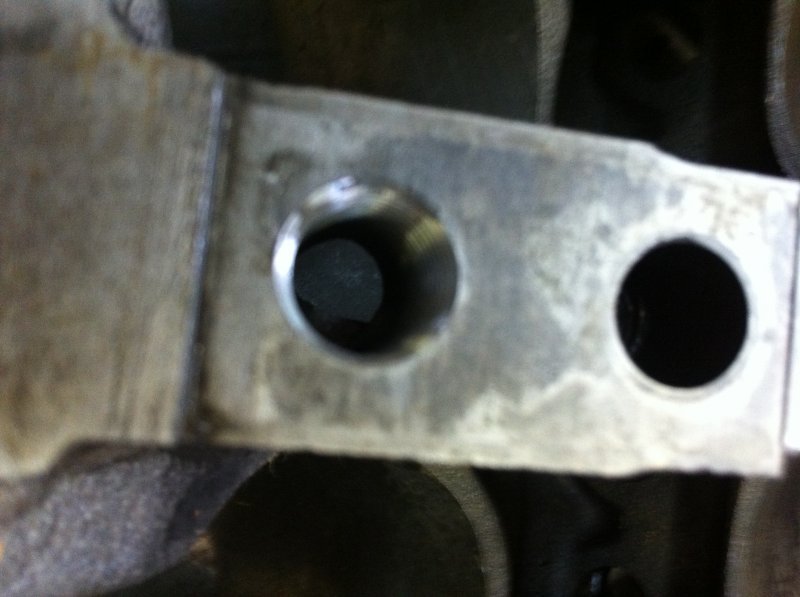OK it was DevilDog not Bowtie.
Navigation
Install the app
How to install the app on iOS
Follow along with the video below to see how to install our site as a web app on your home screen.
Note: This feature may not be available in some browsers.
More options
-
Welcome to The Truck Stop! We see you haven't REGISTERED yet.
Your truck knowledge is missing!
- Registration is FREE , all we need is your birthday and email. (We don't share ANY data with ANYONE)
- We have tons of knowledge here for your diesel truck!
- Post your own topics and reply to existing threads to help others out!
- NO ADS! The site is fully functional and ad free!
Problems registering? Click here to contact us!
Already registered, but need a PASSWORD RESET? CLICK HERE TO RESET YOUR PASSWORD!
You are using an out of date browser. It may not display this or other websites correctly.
You should upgrade or use an alternative browser.
You should upgrade or use an alternative browser.
Rebuild Time
- Thread starter NVW
- Start date
Will L.
Well-Known Member
Wow! That's one Heck of an illusion. That is what I kept thinking was the valve smash mark, and why I was concerned about the entire valve train.
If it is a build up occurring there, then why is the valve (looks like exhaust) causin part of it to stay clean? I remember that on Devildogman's pics- but thought that was camera flash odd the cylinder walls.
If it is a build up occurring there, then why is the valve (looks like exhaust) causin part of it to stay clean? I remember that on Devildogman's pics- but thought that was camera flash odd the cylinder walls.
NVW
Well-Known Member
That cyl. was wet, the injector spray may have washed the carbon off in that area.
NVW
Well-Known Member
I'm debating on whether or not being a guinea pig for the forum. I have the inserts coming, my cracks are above the bottom of the holes and Missy states in this thread, that is acceptable: http://www.thetruckstop.us/forum/threads/k1500-6-5td-overhaul.23326/#post-292914 If the inserts will salvage an otherwise boat anchor, it's good news.
ak diesel driver
6.5 driver
We always like it when someone else isthe Guinea pig. Lol
bison
Well-Known Member
Well it least you have something to bolt the anchor chain down to if it doesn't work out ehI'm debating on whether or not being a guinea pig for the forum. I have the inserts coming, my cracks are above the bottom of the holes and Missy states in this thread, that is acceptable: http://www.thetruckstop.us/forum/threads/k1500-6-5td-overhaul.23326/#post-292914 If the inserts will salvage an otherwise boat anchor, it's good news.
bowtiebutler956
Active Member
I've read a fair amount on them, and I have to say, they look like a quality product.  I say go for it, somebody's got to be the guinea pig.
I say go for it, somebody's got to be the guinea pig. 
Matt
Matt
How in a cracked web main does the lock/stitch bring back the structural aspect? I can see how it would fill a crack in a water jacket, but not how it would on a web main. I'm not understanding the transfer for force in the repair.
NVW
Well-Known Member
Look in their website Leroy, the threads are not normal. They have a vertical pitch, so when the insert is tightened it pulls everything together. The inside of the insert has the regular thteads.
OH OK. My mind was thinking more along filling a crack. In a web main crack you would also go 90* to the crack.
NVW
Well-Known Member
No other cracks. I received my kit today, watching the video gives me confidence. They say much more severe cracked holes can be repaired, and will be stronger than new.
I'm willing to try it, if it works it will be good news for all. If all I get is 50k miles out of this engine, that's about 10 years.
I'm willing to try it, if it works it will be good news for all. If all I get is 50k miles out of this engine, that's about 10 years.
btfarm
America First!
So Leo... Are you ok with being about 20 miles from BFE, Alberta in the dead of winter towing a trailer loaded with a big weldment you are delivering and that motor scatters? That just could be a life threatening event. We would worry for your safety. Just thinking...
NVW
Well-Known Member
Thanks for the concern Mike, this truck is likely to be just a feed truck soon.So Leo... Are you ok with being about 20 miles from BFE, Alberta in the dead of winter towing a trailer loaded with a big weldment you are delivering and that motor scatters? That just could be a life threatening event. We would worry for your safety. Just thinking...
According to "lock n stitch", this should work.
NVW
Well-Known Member
I do appreciate all the warnings, I have my reservations as well.
When welding cast, with a 60-70 psi tensile strength alloy, you only need 2/3'rds penetration to have the same strength. These inserts are 130k psi, and they pull the cast together as you torque the bolt. I am also going from 12mm to 10 mm bolts, there is a significant decrease in torque put on the webs. The nature of a thread, spreads the bolt hole apart, these insert pull it together.
I hope it works.
When welding cast, with a 60-70 psi tensile strength alloy, you only need 2/3'rds penetration to have the same strength. These inserts are 130k psi, and they pull the cast together as you torque the bolt. I am also going from 12mm to 10 mm bolts, there is a significant decrease in torque put on the webs. The nature of a thread, spreads the bolt hole apart, these insert pull it together.
I hope it works.
btfarm
America First!
If it's a local only feed rig then I see your point of giving it a try...
3500GMC
What T F, over
I think Leo can get the most of the lock and stitch jobbys. The work we've seen him post here, he ain't no hack.
NVW
Well-Known Member
bowtiebutler956
Active Member
Very nice work! Are they difficult to install. Could you elaborate some on whats involved? Thanks
Matt
Matt


